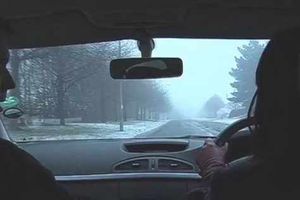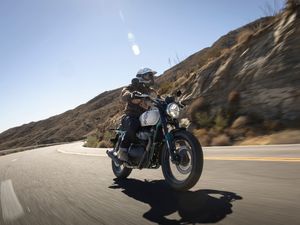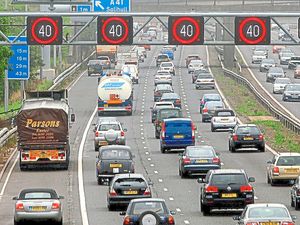How to drive safely on icy roads
Advice from the Shropshire Institute of Advanced Drivers for those venturing out on icy mornings

The Shropshire Star's Women's Editor Tracey O'Sullivan was one of many drivers involved in minor bumps during the black ice which caused rush hour chaos in the first week of January. She went out with Jason Stokes, of the Shropshire Institute of Advanced Drivers, for advice on driving in testing conditions. See the video to find out how she got on.
****
Ben Bentley has some good advice for winter drivers
Ignore the warnings - go out and drive in the snow and ice.
It's quite the opposite of all sensible advice issued by motoring organisations, of course, but since research reveals that almost half of road users continue to make their journey despite the weather forecast and against all advice, it may as well be the latest tip for drivers intent on ignoring common sense and hitting the roads regardless.
Meanwhile, back in the real world which saw snow bringing chaos to parts of the county yesterday, many motorists have no choice but to attempt journeys in their cars.
"You have no alternative sometimes but to go out," says David Carless from the Shropshire Institute of Advanced Drivers. "We have all got to go out."
He points out that Shropshire in particular, with its rural roads and sometimes hilly terrain, can be particularly tricky to negotiate in snow and ice.
The Shropshire Institute of Advanced Drivers has issued advice if people have to drive in the sort of wintry conditions which are expected to continue for a few more weeks.
First of all, when driving in snow, get your speed right - not too fast so that you risk losing control, but not so slow that you risk losing momentum when you need it - and brake, steer and accelerate as smoothly as possible.
Start gently from stationary, avoiding high revs. Try using second instead of first gear to avoid wheels spinning. If you get yourself into a skid the main thing to remember is to take your foot off the pedals and steer.
Only use the brake if you cannot steer out of trouble.
Once moving, keep a good distance between yourself and the car in front. Double or even triple your normal stopping distance and drive so that you do not rely on your brakes to be able to stop - on an icy surface they simply may not do that for you. Better to use your gears to control the speed of your vehicle.
Think ahead and try to keep moving, even if it is at walking pace.
David Carless says: "The worst thing I've seen is people driving too close to the car in front. It could be lethal - the car in front has only got to stop and they have got no chance."
Bends are a particular problem in slippery conditions - slow down before you get to the bend, so that by the time you turn the steering wheel you have already lost enough speed. Try and take the widest line in order to keep wheels as straight as possible.
Says David: "Again, avoid sudden movements. You can use a lower gear but the problem with going into first is that it can cause your back wheels to lock up. Try using second first."
And going down steep hills in snow and ice is particularly hazardous. On a downhill slope get your speed low before you start the descent, and do not let it build up - it is much easier to keep it low than to try and slow down once things get slippery.
"Going downhill, use your gears as much as possible as a way of braking, using a lower gear and avoiding sudden movements that can put the car out of balance."
But some hills in Shropshire are so steep that the gentle use of brakes is required.
"Going down Harley Bank you have got no chance of just using your gears," says David. "Just try to keep the vehicle in a straight line, going smoothly and making no sudden movements. Going up Harley Bank, again keep a good distance between your car and the one in front and keep the momentum of the vehicle in a straight line, says David. He also advises that if possible drivers should plan their journey around busier roads and bus routes as they are more likely to have been gritted.
Conversely, to avoid using short cuts on minor roads as these are less likely to be cleared or treated with salt, especially country lanes and housing areas. On motorways stay in the clearest lane where possible, away from slush and ice. Keep within the clear tyre tracks if you can. Stay in a higher gear for better control, and if it is slippery, in a manual car move off in a higher gear, rather than just using first.
Says David: "I think we have got out of the habit of driving in these conditions, but if this continues we are going to have to change."





